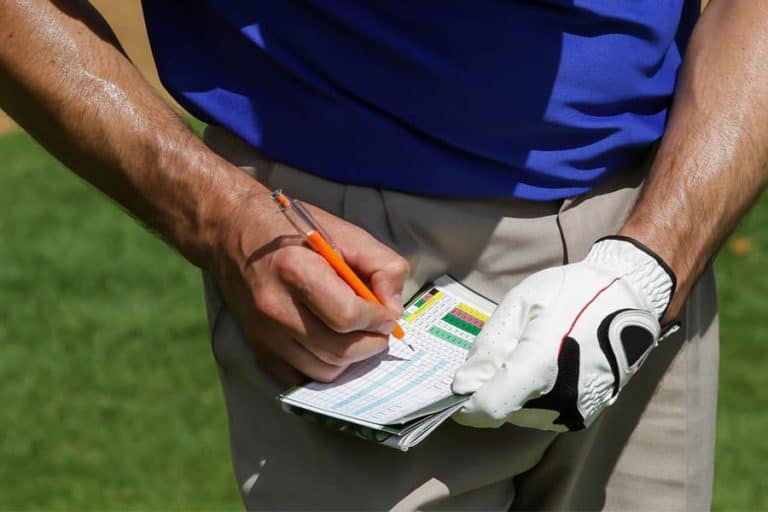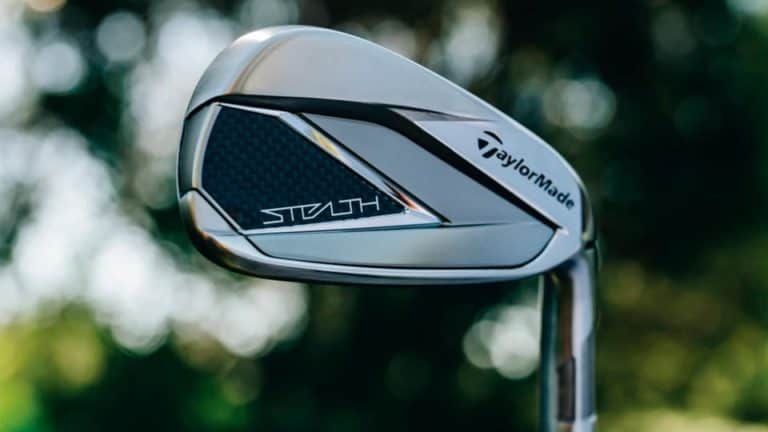How Do Golf Rangefinders Work?

Golf rangefinders work by using a laser to measure the distance from the device to an object or location. This article gives detailed information on how do golf rangefinders work.
Golf rangefinders are a piece of valuable equipment for golfers of all skill levels. By providing accurate distance readings to the greens, bunkers, hazards, and other landmarks, they can help golfers make better decisions on the course.
I. Different types of Golf range finders: How do they work?
Golf rangefinders are available in a variety of sizes and styles. There are four different styles of rangefinders that can assist in your golf game and help in improving it.
1. GPS rangefinder
The abbreviation of GPS in GPS rangefinder stands for Global Positioning System, which helps in monitoring and targeting accurate distances over the course.
These devices provide golfers with accurate data about the distance from their current location to the target. Using this information, golfers can make better decisions about club selection and plan their shots.
- GPS Technology
GPS rangefinders use satellite signals to determine the exact distance from the golf ball to the target. This eliminates the need for golfers to guess or estimate the distance. With the aid of a GPS rangefinder, golfers can easily determine the exact distance to the green, the hazard, or any other point on the course.
Additionally, GPS rangefinders can provide additional information, such as the slope of the terrain and wind speed, both of which can be used to help golfers make the best possible decision.
GPS rangefinder is also invaluable for tracking a golfer’s performance over time. By recording the distances and other metrics associated with each shot, golfers can identify areas where they need to improve and track their progress over time.
2. Laser rangefinder
Laser rangefinders have revolutionized distance measurements in various fields, including surveying and engineering.
These devices employ advanced technologies like laser-based triangulation and time-of-flight measurements to provide accurate and reliable distance readings. Both methods are highly accurate and can be used in a variety of applications.
- Laser-based triangulation method
In laser-based triangulation methods, a laser beam is emitted from the rangefinder, and the reflected beam is measured and used to calculate the distance between two points.
This method is typically used for short-distance measurements and is capable of measuring distances up to several hundred meters.
- Time-of-flight measurements
Time-of-flight measurements use a single laser pulse that is emitted from the rangefinder and travels to the target. The time it takes for the pulse to travel to the target and back is then used to calculate the distance between the two points.
This method is typically used for longer-distance measurements and is capable of measuring distances up to several kilometers.
3. Hybrid rangefinder
Hybrid rangefinders are a combination of laser and GPS technology designed specifically for golfers. These devices are used for measuring distances on the golf course as well as providing course data.
Golfers use hybrid rangefinders to measure distances to the pin, hazards, bunkers, and other landmarks on the course. They are also used to determine the yardage for any club in the bag.
Hybrid rangefinders provide course data such as course layouts/ mapping, hole distances, and other features. With this data, golfers can select the right club for the shot and plan their strategy accordingly.
4. Optical rangefinder
Optical rangefinders are devices used to measure the distance between two points for golfing purposes.
They are used to identify the distance between the golfer and the target, usually the flagstick or the green. This knowledge helps the golfer choose the correct club for the shot and make a more informed decision on their shot.
An optical rangefinder uses a laser beam projected from the device to the target. The laser beam bounces off the target and returns to the rangefinder, which measures the time it takes for the beam to travel there and back.
The rangefinder then converts this time into a distance value. However, they are older rangefinders and are now considered obsolete compared to modern technologies.
II. Laser vs. GPS Rangefinders
When it comes to golf rangefinders, there are primarily two categories: laser rangefinders and GPS rangefinders.
Laser rangefinders, such as those offered by leading companies like Bushnell, Voice Caddie, etc., are known for their accuracy but require a direct line of sight to the target.
On the other hand, GPS rangefinders, available as smartphone golf gps apps or dedicated units, provide readings based on pre-mapped golf courses, offering distance information to pins and obstacles.
| Aspect | Laser rangefinders | GPS rangefinders |
| Accuracy | Highly accurate, provides precise distance measurements | May have slight variations in accuracy, dependent on signals and course mapping |
| Line of sight | Requires a direct line of sight to the target | No line of sight required provides distance information based on pre-mapped courses |
| Target flexibility | Measure distances to specific targets, such as flags | Provides distance readings to various points on the course, including hazards and greens |
| Course Coverage | Can be used on any golf course | Requires pre-mapped course data for accurate readings |
| Obstacle | Obstacles can obstruct accuracy if in the line of sight | Obstacles have no impact on distance calculations |
| Ease of use | Requires aiming and targeting skills | Easy to use, simply view the GPS readings on the device or app |
III. Hunting rangefinder vs. golf rangefinders
While hunting rangefinders and golf rangefinders may look alike, their functionalities are tailored to serve distinct purposes. Here are the major differences between hunting rangefinders and golf rangefinders:
- Target Modes: Hunting rangefinders employ a “Distant Target Mode,” focusing on distant objects in the wilderness, unlike golf rangefinders that prioritize closer, foreground targets like flags.
- Accuracy and Speed: Hunting rangefinders generally offer greater precision than golfers. However, this higher precision might result in slower readings.
- Range Differences: Golf laser rangefinders typically cover distances up to 400 yards. While some models may provide a longer range, it often leads to reduced accuracy. In contrast, hunting rangefinders can cover distances of up to 1,000 yards, but they’re not designed to pinpoint specific targets like a golf flag.
Can I use a rangefinder designed for hunting for golf?
While it is technically possible to use a rangefinder designed for hunting for golf, it may not be the most suitable option.
Rangefinders designed specifically for golf often have features and functionalities tailored to the game, such as pin-seeking technology, slope mode, and preloaded golf course maps.
These features can greatly assist golfers in accurately measuring distances and making strategic decisions on the course.
On the other hand, hunting rangefinders may lack these golf-specific features and may not provide the same level of accuracy or convenience for golf-related measurements.
IV. How to use a golf rangefinder?
To use a rangefinder effectively:
- Hold the device up to your eye.
- Look through the viewfinder and locate your target (e.g., the flag).
- Press the button to send out a laser beam or to initiate the GPS measurement.
- The device will then calculate and display the distance.
1. How to hold a rangefinder steady?
Holding a rangefinder steady is crucial for accurate distance measurements. Here are some tips to help you get a steady hold:
- Hand Placement and Body Support: One effective method is to hold the rangefinder with one hand while resting your elbow on your chest. This not only provides a solid base but also reduces the chance of your arm shaking.
- Use Your Surroundings: If you’re using a golf cart, take advantage of its structure. You can steady yourself against the cart’s frame or even rest the rangefinder on the lower half of the folded-down windshield, offering a firm base.
- Collaborate with a Partner: If you’re playing with a partner and they’re willing, you could use their shoulder as a rest. Just be sure to ask them first to avoid any discomfort.
2. Where do you aim a golf rangefinder?
When using a golf rangefinder, aim it at the target you want to determine the distance. For most golfers, this is often the flagstick or pin.
However, to evaluate your strategy, you can also aim it at other points of interest on the course, such as a bunker or a hazard.
3. What is the slope mode on a rangefinder?
Slope mode is an innovative feature found in many golf rangefinders that can significantly enhance your golf game. This feature considers the elevation changes and slopes on the golf course, providing adjusted distance measurements that factor in the impact of the terrain.
This mode helps golfers make informed decisions about club selection and shot strategy. However, it’s important to note that slope mode is typically not allowed in official tournaments.
4. How to use a golf rangefinder monocular?
Using a golf rangefinder monocular is a simple process. Close your non-viewing eye and hold the device steadily. Aim at the target using the reticle or crosshairs and operate the controls to initiate the measurement. The rangefinder will provide you with the distance reading on the LCD screen.
5. Do golf rangefinders help lower your score?
Golf rangefinders can help lower your score by providing accurate distance measurements, aiding in club selection, shot strategy, and improving course management.
However, it’s important to note that while rangefinders provide valuable assistance, they are not a substitute for good technique, skill development, and course management. They serve as tools to make more informed decisions, but your execution and overall game performance will ultimately determine your score.
V. Benefits and drawbacks of using a rangefinder
A golf rangefinder is typically used to measure the distance to the flagstick or pin. They can also be used to measure the distance to hazards, bunkers, trees, and other objects.
Most rangefinders also have a feature that allows the user to zoom in on the target, which can help determine exact distances.
Here are some benefits and drawbacks of rangefinders:
Pros:
- Eliminates guesswork in distance measurements
- Improves distance control for more accurate shots
- Speeds up gameplay by providing quick and precise distance readings
- Enables golfers to play shots based on accurate distances for better strategy and club selection
Cons:
- Tournament restrictions on usage
- Dependency on technology, susceptible to malfunctions
- Limited battery life
- Requires time to learn and adapt to its use
- Line of sight restrictions for laser rangefinders
VI. Rangefinders in Tournaments
While rangefinder usage was initially limited to practice rounds, rangefinders are now legal in certain events, including the PGA tournament.
However, according to USGA, their use during tournaments has specific restrictions and limitations.
For example, in PGA tournaments, rangefinders must not have a slope feature or the ability to measure wind speed. These limitations ensure fair competition and prevent the use of additional technological advantages during gameplay.
VII. Tips for choosing the rangefinder based on technology
When selecting a rangefinder for your golf game, consider the following tips to make an informed decision:
1. Look for features such as range, accuracy, portability, and ease of use. Rangefinders with advanced technology will be able to measure longer distances with greater accuracy and be more portable and easier to use.
2. Consider the type of golf rangefinder technology you will be using. Laser rangefinders are more accurate than optical rangefinders and can typically measure to a greater range.
3. Choose a rangefinder with a long battery life. Many rangefinders offer rechargeable batteries, which can be convenient for extended use.
4. Look for rangefinders with a display that is easy to read. Some rangefinders offer backlit displays, making them easier to read in low-light conditions.
5. Consider buying a rangefinder with target lock and continuous scan mode features. Target lock allows you to lock onto a target and get a more accurate reading, while continuous scan mode allows you to scan an area quickly and get multiple readings without having to manually adjust the rangefinder.
6. Think about any other features you may need. Features such as range adjustment, angle adjustment, and slope compensation can be helpful for certain activities.
7. Make sure the rangefinder is compatible with your existing equipment. Rangefinders often have proprietary software and can only be used with certain devices.
8. Consider the cost of the rangefinder. Rangefinders with more advanced technology will cost more but may be worth the investment if you require more accurate readings.
VIII. Rangefinders Alternatives
There are several alternatives to rangefinders that you can consider:
- Golf GPS Apps
- GPS Devices
- Golf GPS Watches
- Golf Course GPS Carts
- Course Markers and Yardage Books
- Map and Compass
- Binoculars with Rangefinder Function
Conclusion
Golf rangefinders are a great tool for any golfer who wants to improve their game. They provide accurate and reliable measurements of distances on the course and allow golfers to hit faster and more accurate shots.
With the help of modern technology, these rangefinders are becoming more and more user-friendly, making them an invaluable asset on the golf course.
FAQs
1. Do pros use golf rangefinders?
Professional golfers have the option to use golf rangefinders, but they often rely on their experience and skill to manually judge distances. As a result, most pros utilize rangefinders primarily during practice rounds rather than official tournaments.
2. Why are Bushnell Rangefinders so popular?
Bushnell rangefinders have gained significant popularity for several reasons. One key factor is their inclusion of JOLT technology, which provides a vibrating alert when the desired target has been locked onto. This feature enhances user experience and ensures accurate measurements.








